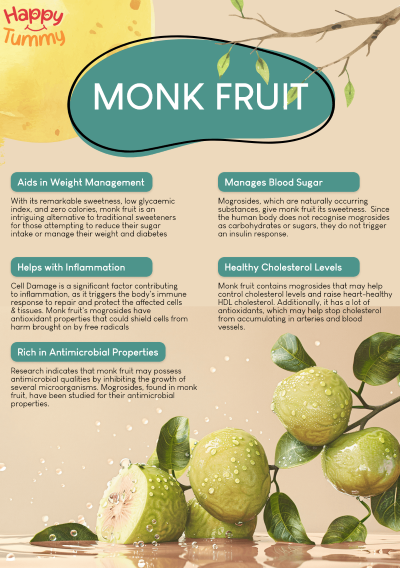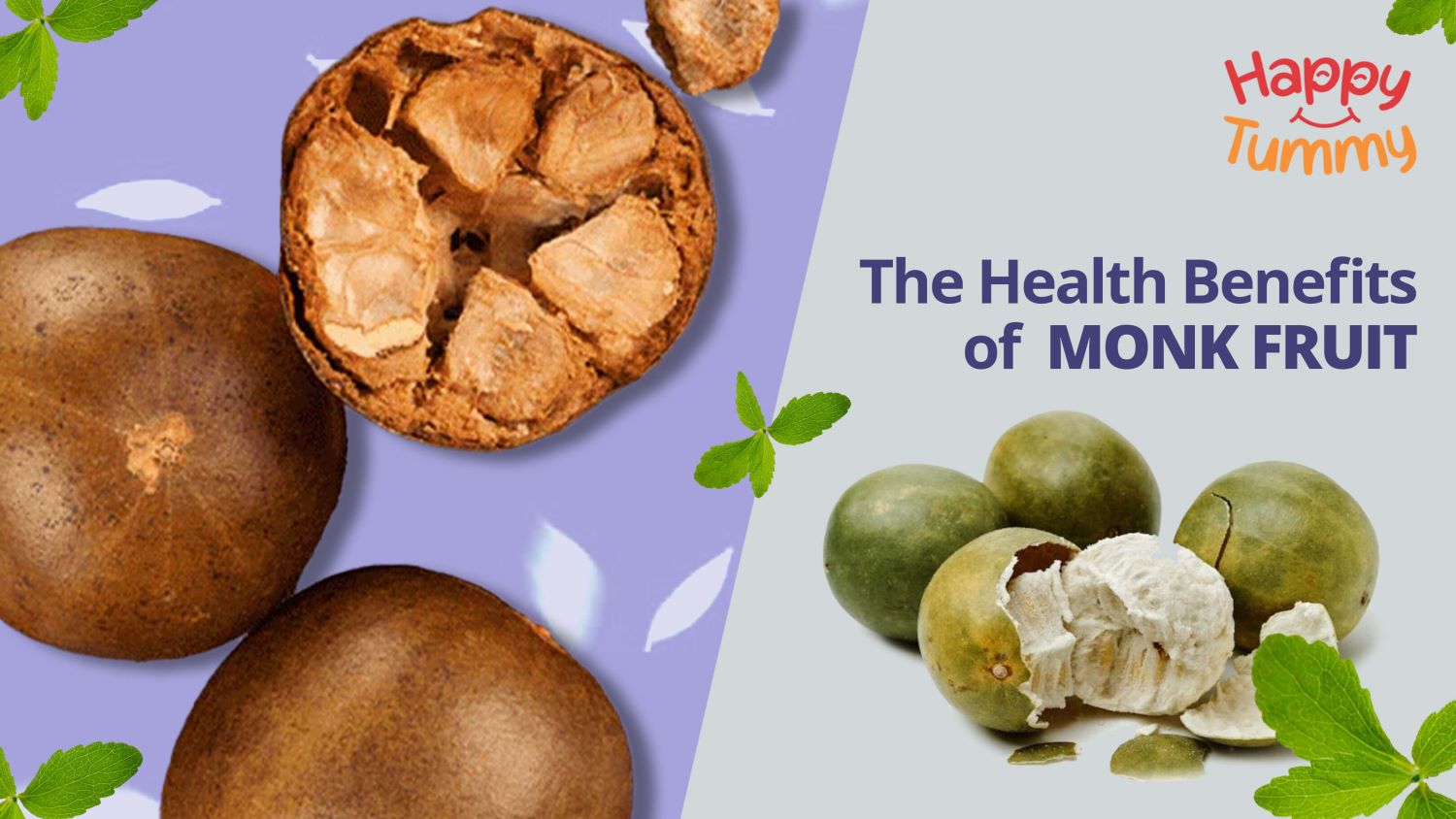Table of Contents
In search of healthier alternatives, many individuals avoid high-fructose corn syrup and processed table sugar.
Many adopt more extensive measures, including a raw food diet, a ketogenic diet, a juice diet, and many more, which can help some people cut back on calories and lose weight.
Additionally, since many sweeteners impact blood sugar, persons with conditions like diabetes need to be mindful of the kinds they take.
Most of us probably couldn’t identify a monk fruit in the produce section, and honestly, it’s unlikely to stand out among the juicy lemons, sparkling oranges, and colourful apples.
However, the monk fruit is currently receiving a lot of attention from those with diabetes, sugar-free disciples, and health-conscious foodies.
This article will give you all the information you need to understand monk fruit, how to consume it, and the health advantages that will encourage you.
About Monk Fruit
Monk fruit is a tiny, perennial herb called swingle fruit or arhat fruit in India. The little, round, green fruit, scientifically known as Siraitia grosvenorii, is indigenous to northern Thailand and southern China.
Due to its long history of use by Buddhist monks, this fruit is also known in Chinese as Luo Han Guo, which translates to “Buddha fruit” or “monk fruit.”
Monk fruit has just lately become well-known in the West, mainly as a natural, low-calorie sweetener, while being a mainstay in Asian traditional medicine.
Because monk fruit is small and has thick flesh, it is not usually consumed whole like other fruits.
Instead, it is harvested, dried, and processed to extract its sweet components, serving as a decent sugar substitute.
Despite not being as visually appealing as its more colourful peers, monk fruit provides many health benefits to consumers concerned about their health.
Extraction Process
Monk fruit has historically been extracted and purified by a method that starts with the mature fruit being harvested and then dried to preserve its unique components.
The high sweetness of monk fruit is due to sweet-tasting mogrosides, that are meticulously removed from the fruit’s flesh using solvents containing water or alcohol.
Following the extraction of the microsites, the liquid is filtered and concentrated to eliminate contaminants. The concentrated monk fruit extract is then dried and processed to produce a liquid or powder.
Monk fruit extract is frequently combined with other natural ingredients, such as erythritol, to balance its sweetness and produce a more adaptable, sugar-like product that may be used in baking and beverage-making industries.
The finished product lacks calories and sweets while retaining the fruit’s deliciousness.
Benefits of Monk Fruit
Dried monk fruit extract is used to make monk fruit sweeteners. This extract contains no calories and is 150–250 times sweeter than table sugar.

Monk fruit has a long history of medicinal use. Among its advantages are the following:
#1 Aids in Weight Management
Weight management is the first thing that springs to mind when changing your diet. Buddha fruit is no different.
If you want to try it, you would like to know if this little Buddha fruit helps you manage your weight. The good news is that it may help people manage their weight.
With its remarkable sweetness, low glycaemic index, and zero calories, monk fruit is an intriguing alternative to traditional sweeteners for those attempting to reduce their sugar intake or manage their weight and diabetes.[1]
So, if you are into weight management, you can cut calories using monk fruit sweeteners for breakfast, oats or daily coffee.
People can also use monk fruit sweeteners to make pastries and delights that are minimal in calories.
#2 Manages Blood Sugar
Those with diabetes often look for options to satisfy their sweet tooth. Many alternatives are available these days that you may include in your diet without completely eliminating them. One such option is the Buddha fruit.
Mogrosides, which are naturally occurring substances, give monk fruit its sweetness. Since the human body does not recognise mogrosides as carbohydrates or sugars, they do not trigger an insulin response[2]
Studies reveal that these substances may also exhibit anti-diabetic activity by enhancing the rate of blood glucose uptake and may have potential benefits for diabetic patients. [3]
Oxidative stress is often found as one of the major causes responsible for the pathogenesis of diabetes.
The extract of monk fruit has high antioxidative properties, which may potentially suppress the oxidative stress-mediated diabetes.
#3 Helps with Inflammation
Lifestyle diseases like diabetes, high cholesterol, and obesity have become common because of poor dietary choices. So, choosing the right foods becomes essential so you don’t succumb to chronic inflammation.
Cell Damage is a significant factor contributing to inflammation, as it triggers the body’s immune response to repair and protect the affected cells & tissues.
Monk fruit’s mogrosides have antioxidant properties that could shield cells from harm brought on by free radicals.[4]
In addition to mogrosides, they also contain rutin, kaempferol, and quercetin, all having antioxidant, antimicrobial, and anti-inflammatory properties[5]
These antioxidants present may also have protective benefits against oxidative stress and inflammation by assisting the body in scavenging dangerous free radicals
The body uses inflammation as a natural healing mechanism, but chronic inflammation is linked to several health issues. So, having monk fruit might protect your cells and manage chronic inflammation.
#4 Rich in Antimicrobial Properties
Antimicrobial resistance (AMR) is an important global hazard to public health and development.
When bacteria, viruses, fungi, and parasites stop responding to antimicrobial medications, it’s known as AMR.
Drug resistance may raise the risk of disease transmission and severe sickness by making antibiotics and other antimicrobial medications ineffective and making it harder or impossible to treat infections. [6]
Thus, eating nutritious foods high in antimicrobial properties becomes crucial.
Research indicates that monk fruit may possess antimicrobial qualities by inhibiting the growth of several microorganisms. Mogrosides, found in Buddha fruit, have been studied for their antimicrobial properties.[7]
These studies suggest that the high-intensity sweetness and specific chemical composition of mogrosides could potentially inhibit the growth of certain bacteria, further supporting the immune system in fighting & controlling bacterial infections.[8]
#5 Healthy Cholesterol Levels
Monk fruit contains mogrosides that may help control cholesterol levels and raise heart-healthy HDL cholesterol.[9]
Additionally, it has a lot of antioxidants, which may help stop cholesterol from accumulating in arteries and blood vessels.
It is thought that monk fruit may lessen intestinal cholesterol absorption, which could benefit heart health in general.
How to Consume Monk (Buddha) Fruit
People can use monk fruit as a sweetener in a variety of dishes and beverages, such as:
- Coffee and Tea
- Fruit juice, drinks, and beverages
- Salad dressings and sauces
- Frozen yoghurt with ice cream
- Muesli
- Toppings and mayonnaise
Monk fruit sweeteners are typically not appropriate substitutes for sugar in baked foods that require sugar for structure and texture.
You can buy monk fruit extract specially formulated for baking. However, Buddha fruit sweeteners are more expensive than alternatives because manufacturers need help growing and processing them.
Monk Fruit Allergies
Although allergies to monk fruit are uncommon. Along with pumpkin, squash, cucumbers, and melons, monk fruit belongs to the Curcurbitaceae family, sometimes called the gourd family.
So if you are allergic to other gourds, you are more likely to have a monk fruit allergy.
Consult a healthcare professional immediately if you experience allergic symptoms while consuming them. Some common symptoms of an allergic reaction are :
- Rash or hives
- Tongue swelling,
- Nausea,
- Stomach ache
The Last Say
A fit, active lifestyle adapted to one’s priorities and goals is essential for promoting health.
One strategy to control calorie intake and minimise added sugar intake is to choose meals and drinks sweetened with low- or no-calorie sweeteners, like budha fruit sweeteners.
These measures are crucial for preserving health and lowering the risk of lifestyle-related diseases. Monk fruit extract is a natural sweetener that may have several health advantages.
If you’re curious whether monk fruit is best for your health, talk to our healthcare provider about what you can do.
Reach out to our certified nutritionist for a 45-minute consultation and get a customised nutrition plan created just for you.
Frequently Asked Questions
People with diabetes may consume foods and drinks that contain low—or no-calorie sweeteners, such as monk fruit sweetener. This helps them manage their sugar intake while still satisfying their sweet tooth. Consult your doctor to understand how to incorporate this brilliant sweetener.
Some people may become ill from monk fruit because of intolerance or allergic reactions. Rash or hives, tongue swelling, nausea, or stomach ache are possible symptoms. Consult a healthcare professional to understand your body’s demands and make the right choice.
Despite its great demand, this crop is only grown in China. However, India, especially Himachal Pradesh, also has appropriate agroclimatic conditions.
















